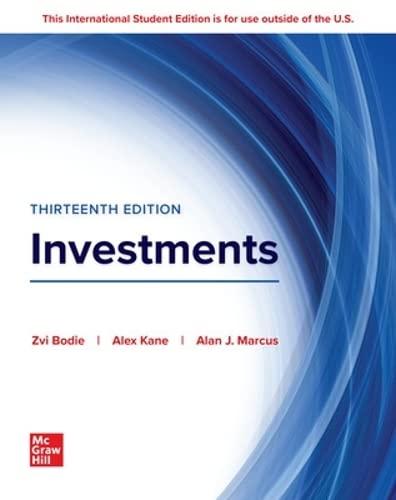Carl Karl, a portfolio manager for the Alpine Trust Company, has been responsible since 2025 for the
Question:
Carl Karl, a portfolio manager for the Alpine Trust Company, has been responsible since 2025 for the City of Alpine’s Employee Retirement Plan, a municipal pension fund. Alpine is a growing community, and city services and employee payrolls have expanded in each of the past 10 years. Contributions to the plan in fiscal 2030 exceeded benefit payments by a threeto-one ratio.
The plan board of trustees directed Karl five years ago to invest for total return over the long term. However, as trustees of this highly visible public fund, they cautioned him that volatile or erratic results could cause them embarrassment. They also noted a state statute that mandated that not more than 25% of the plan’s assets (at cost) be invested in common stocks.
At the annual meeting of the trustees in November 2030, Karl presented the following portfolio and performance report to the board:
Alpine Employee Retirement Plan Asset Mix as of 9/30/2030 At Cost (millions) At Market (millions)
Fixed-income assets:
Short-term securities $ 4.5 11.0% $ 4.5 11.4%
Long-term bonds and mortgages 26.5 64.7 23.5 59.5 Common stocks 10.0 24.3 11.5 29.1
$41.0 100.0% $39.5 100.0%
Investment Performance Annual Rates of Return for Periods Ending 9/30/2030 5 Years 1 Year Total Alpine Fund:
Time-weighted 8.2% 5.2%
Dollar-weighted (internal) 7.7% 4.8%
Assumed actuarial return 6.0% 6.0%
U.S. Treasury bills 7.5% 11.3%
Large sample of pension funds (average 60% equities, 40% fixed income)
10.1% 14.3%
Common stocks—Alpine Fund 13.3% 14.3%
Alpine portfolio beta coefficient 0.90 0.89 Standard & Poor’s 500 stock index 13.8% 21.1%
Fixed-income securities—Alpine Fund 6.7% 1.0%
Broad Investment Grade bond index 4.0% −11.4%
Karl was proud of his performance and was chagrined when a trustee made the following critical observations:
a. “Our 1-year results were terrible, and it’s what you’ve done for us lately that counts most.”
b. “Our total fund performance was clearly inferior compared to the large sample of other pension funds for the last five years. What else could this reflect except poor management judgment?”
c. “Our common stock performance was especially poor for the 5-year period.”
d. “Why bother to compare your returns to the return from Treasury bills and the actuarial assumption rate? What your competition could have earned for us or how we would have fared if invested in a passive index (which doesn’t charge a fee) are the only relevant measures of performance.”
e. “Who cares about time-weighted return? If it can’t pay pensions, what good is it?”
Appraise the merits of each of these statements and give counterarguments that Mr. Karl can use.
.P-96
Step by Step Answer:

ISE Investments
ISBN: 9781266085963
13th International Edition
Authors: Zvi Bodie, Alex Kane, Alan Marcus





